The More the Merrier
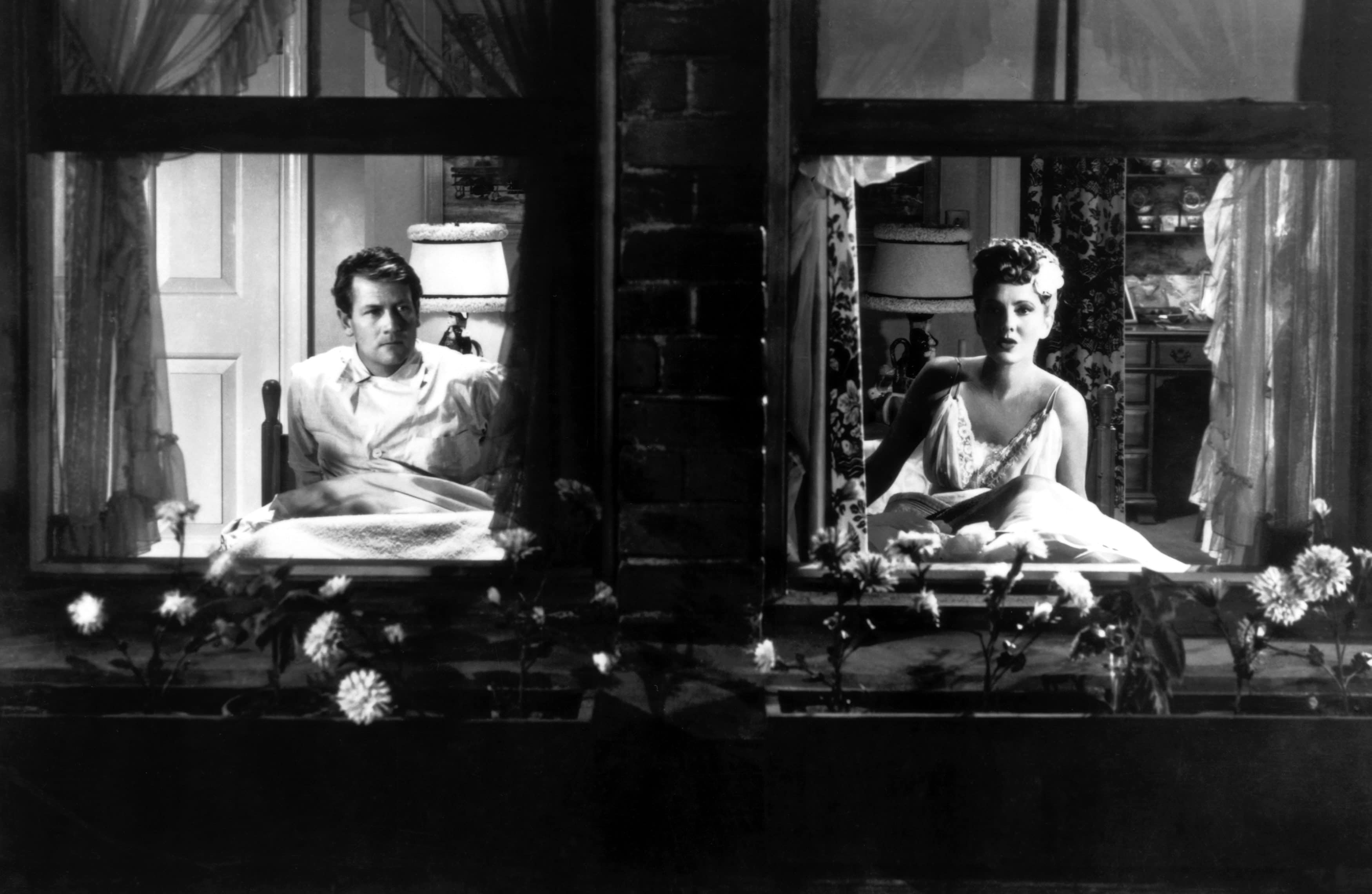
Brief Synopsis
Cast & Crew
George Stevens
Jean Arthur
Joel Mccrea
Charles Coburn
Richard Gaines
Bruce Bennett
Film Details
Technical Specs

Synopsis
Retired millionaire Benjamin Dingle comes to Washington and is greeted by a flurry of no vacancy signs, the result of a severe war-time housing shortage in the capital. Upon discovering that he must wait two days to occupy his hotel suite, Dingle scours the classified ads for room rentals. Arriving at a building to find a line of eager applicants waiting to rent the half-apartment described in the paper, the enterprising Dingle pretends to be the lease holder and dismisses the other candidates. When Connie Milligan, the real lease holder, arrives, she expresses reluctance to rent to a male roommate, but Dingle convinces her to grant him a week trial period. After Connie scurries to work the next morning, Dingle meets Sgt. Joe Carter, who has come to inquire about renting the room while he awaits his military assignment. Dingle offers to rent Joe half of his room, and when Connie returns home from work that evening, Dingle tries to conceal Joe's presence from her. Joe's barking in the shower attracts Connie's attention, however, and upon discovering her new tenant in the hallway, she becomes furious and orders both Dingle and Joe to leave. When they demand that she refund their rent, however, Connie allows them to stay because she has spent the money on a new hat. At breakfast the next morning, Joe finds himself attracted to his new landlady. After Connie reveals that she has been engaged for two years to bureaucrat Charles J. Pendergast, Dingle questions the delay and advises her to "damn the torpedoes, full speed ahead." Dingle, who has come to Washington as an advisor on the housing shortage, coincidentally meets the prosaic Pendergast the next day at a luncheon meeting and decides that Joe would be a better match for Connie. One day, Dingle discovers Connie's diary and begins to read aloud the pages that flatter Joe. When Connie discovers Dingle reading her diary, she denounces him and orders both Dingle and Joe to move out the next day. The following day, Connie returns home from work, and Joe gives her a farewell note from Dingle, absolving him of all blame in the diary incident, and then presents her with a traveling bag as an apology. Connie, who has become attracted to Joe, accepts the gift and agrees to let him stay until he leaves for his mission in Africa in two days. When Joe invites Connie to dinner that night, she demurs, saying that she must wait until eight o'clock for Pendergast's call. After the hour passes without a call from Pendergast, Joe and Connie prepare to leave when Connie's neighbor, teenager Morton Rodakiewicz, comes to ask her opinion about joining the Boy Scouts. Morton notices that Joe has taken the phone off the hook, and as soon as he returns the receiver to its cradle, Pendergast calls. As Connie leaves to join Pendergast in the lobby, Joe watches them through binoculars and Morton accuses him of being a spy. After driving Morton away by claiming to be a Japanese agent, Joe goes to meet Dingle for dinner. They arrive at the same restaurant where Pendergast and Connie are dining. When Dingle stops at their table with Joe, Pendergast, who is unaware of Connie's housing situation, invites the two to join them. Determined to unite Joe and Connie, Dingle suggests they dance while he and Pendergast discuss the housing shortage in his suite. On the dance floor, Joe is about to kiss Connie when they are interrupted by a group of Connie's man-hungry women friends. After Pendergast calls Connie to ask Joe to take her home, Connie extracts Joe from the clutches of his admirers, and they walk home together. On the steps outside their apartment building, Joe starts to caress Connie. Flustered, she begins to extoll Pendergast's virtues, and they kiss. Saying goodnight, they retire to their separate bedrooms. Through the wall separating their beds, Connie confides her doubts about marrying Pendergast, and Joe admits that he loves her and proposes. As they murmur endearments to each other, Evans and Pike, two FBI agents, burst into the apartment, having been alerted by Morton that Joe is a Japanese spy. The agents take Joe and Connie to headquarters and also summon Dingle, their ex-roommate, there. Dingle arrives with Pendergast in tow, and when Pendergast learns that Joe shares Connie's address, he is scandalized. After Joe is released when his commanding officer vouches for him, he, Dingle, Connie and Pendergast pile into a cab. Unknown to them, the other passenger in the taxi is a reporter. After accusing Pendergast of being interested only in his career, Connie angrily returns his ring. When the reporter leaves the cab at the headquarters of the Washington Post , Pendergast, terrified of a scandal, follows him. Dingle then advises Joe and Connie to marry quickly and file for an annulment to avoid a scandal. With only twenty-six hours remaining before Joe is to leave for Africa, the couple fly to South Carolina to wed. Upon returning home, the sobbing bride and her groom go to their separate bedrooms. As Joe and Connie nervously pace, they realize that Dingle has had the wall between their rooms removed, and they kiss. Dingle, who has been sleeping in the lobby with a group of roomless men, then steals up to their apartment door and changes the nameplate to read Mr. and Mrs. Sgt. Carter.

Director

George Stevens
Cast

Jean Arthur

Joel Mccrea

Charles Coburn
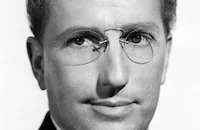
Richard Gaines

Bruce Bennett
Frank Sully

Don Douglas

Clyde Fillmore
Stanley Clements

Ann Savage
Sugar Geise
Peggy Carroll
Pat Lane
Douglas Leavitt
Sam Ash
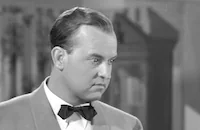
Grady Sutton
Don Barclay
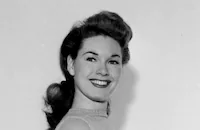
Shirley Patterson
Mary Taylor Williams
June Horne

Ann Doran
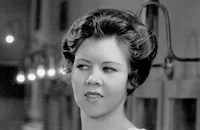
Mary Treen
Gladys Blake
Kay Linaker
Nancy Gay
Byron Shores
Betzi Beaton
Harrison Greene
Robert Mckenzie
Vic Potel
Lon Poff
Frank La Rue
Ernest Hilliard
Douglas Wood
Harry Bradley
Betty Mcmahon
Helen Holmes
Marshall Ruth
Harold Gerard
Henry Roquemore
Jack Carr
Eddie Foster
Kitty Mchugh
Chester Clute
Jack Gardner
Robert F. Hill
Eddy Chandler
George Reed
Marjorie Wood
Lulu Mae Bohrman
Sally Cairnes
Fred Johnson
Bertha Priestley
Diedra Vale
David Alison
John Ince
Fred Rapport
Brandon Beach
Hal Price
Crew
Fay Babcock
Lionel Banks
Lodge Cunningham
Norman Deming
Edward Eliscu
Richard Flournoy
Lewis R. Foster
Jay Gorney
Fred Guiol
Leigh Harline
Otto Meyer
Henry Myers
Frank Ross
Frank Ross
Robert Russell
Robert Russell
Rudolph Sternad
George Stevens
M. W. Stoloff
Ted Tetzlaff

Videos
Movie Clip





Hosted Intro






Film Details
Technical Specs

Award Wins
Best Supporting Actor
Award Nominations
Best Actress
Best Director
Best Original Story
Best Picture
Best Screenplay
Articles
The More the Merrier
One such reality, one that today's audiences may know little about and barely relate to at all, was the housing crisis in many of the country's cities during the war, most especially in Washington, D.C. Thousands of people were suddenly uprooted and relocated to urban areas and the environs of military bases and government operations for war service or defense industry work. At the same time, the war brought about a shortage of materials and personnel for building new housing. The result was overcrowding: people were forced to make unusual living arrangements, often with multiple occupants staying in a single room using the spaces in shifts.
This crisis, for those actually living it, was certainly no joke. It put a strain on relationships, family dynamics, civic institutions, and social services. You may pick up slight hints of those tensions and anxieties bubbling underneath The More the Merrier (1943), but Hollywood is playing the situation for humor and romance here. It's not the only film of the period to address the housing shortage, but it's generally considered the best.
Charles Coburn plays dollar-a-day man Benjamin Dingle. (There's another forgotten phenomenon of the time, the dollar-a-day man, a person doing voluntary government work who, by federal law, must be paid the minimal dollar per day.) He's a retired millionaire, newly arrived in Washington, who finds himself without a place to stay when circumstances change at the last minute. He manages to talk his way into renting a room from a reluctant office worker, Connie Milligan (Jean Arthur), and then subletting half of it, without her knowledge, to Joe Carter (Joel McCrea), a young military man waiting to be assigned to his next post. Connie is furious at first but soon finds herself attracted to Joe, complicating her lingering engagement to a dull bureaucrat.
The film's basic premise--two men sharing an apartment and a single bathroom with a woman--brought some concerns from the Production Code Administration. The de facto censorship office also objected to the frequent use of the word "damn," even though it was repeated by Coburn quoting one of the most famous lines in U.S. history, attributed to naval hero Admiral David Farragut: "Damn the Torpedoes. Full speed ahead." Fiercely independent and ever-forceful producer-director George Stevens managed to get past all the objections, even inserting a scene of a bedtime conversation between Arthur and McCrea with only a thin wall between them so that it almost appears as if the two are in the same bed (a device used in the Cary Grant-Ingrid Bergman film Indiscreet, 1958).
This was Stevens' last film before going off to war as head of a combat motion picture unit that shot the Normandy invasion, the liberation of Paris and the first footage the world saw of the Dachau concentration camp. The More the Merrier, then, represents the culmination of the first part of this acclaimed and influential director's career. After the war, his output of films decreased as he went in for what he felt were more serious subjects worthy of the emotional and intellectual changes he experienced during the war. Today, he is probably most revered for the "big" prestige pictures he turned out in the 1950s, the so-called American trilogy of A Place in the Sun (1951), Shane (1953), and Giant (1956). While those films were box office and critical successes in their day and considered treasured classics now, many critics feel that Stevens lost the intimacy and warmth of the comedies, romances, and adventures he made in the '30s and '40s.
Much has been made of Stevens' abiding interest throughout his career in the outsider figure, the person struggling to belong. This is an auterist take--finding that common thread through the work that marks a film distinctly as the creation of a single guiding directorial force. That's not necessarily an unwarranted approach to his career. He was known for taking his time with projects, working on those he most cared about, and exercising a great deal of control, even during the days of studio dominance over production. But a focus on this one element misses some of his other virtues, particularly in the early studio work and amply on display in this picture.
Stevens had a distinct feel for the relations between men and women, and he worked with some of the best screen couples in some of their most characteristic films: Astaire and Rogers in Swing Time (1936); Ginger Rogers with James Stewart in Vivacious Lady (1938); and Cary Grant and Irene Dunne in Penny Serenade (1941). He had a special way with a romantic scene, creating several of the most intimate, even sexy, moments in classic Hollywood. Hepburn and Tracy (their first on-screen pairing) in the bar in Woman of the Year (1942) and Elizabeth Taylor and Montgomery Clift in the "Tell Mama" party scene in A Place in the Sun are two of the best examples. Jean Arthur and Joel McCrea have such a scene in The More the Merrier, and it's a justly famous delight.
McCrea is walking Arthur home at night along the streets of Washington. They pass couples kissing and snuggling along the sidewalk, McCrea taking interest in them, Arthur trying not to notice. As she quizzes him about the women in his life, he slips his hand onto her arm, her shoulder, her back, and her half-hearted movements to extricate herself from his touch, juggling a fur wrap that at one point she lets slip off her shoulders to allow his hand against her bare skin, are beautifully choreographed and played.
When they reach her stoop, she begins to talk about her fiancé, an older gentleman with whom she boasts of a sensible relationship. McCrea's hands and lips, brushing against her, getting closer and closer, are obviously leading to something very much not sensible. Finally they kiss, and a flustered Arthur climbs the stairs to go into her apartment building (to the strains of Cole Porter's "What Is This Thing Called Love?"). She offers him a handshake good night, closes the door behind her, and he starts to walk off until he realizes that, in fact, he lives in her spare room. She opens the door to let him into the vestibule; they turn on the light and discover a hallway full of men sleeping on cots, grumbling about being disturbed. This sudden return to the film's comic premise--the housing crisis--is the perfect button to the quiet sensuality of the stoop scene.
This was the last film Stevens directed under a three-picture contract with Columbia that afforded him authority and control most Hollywood directors of the time could only dream about. Studio boss Harry Cohn was willing to let Stevens work without interference on The More the Merrier largely thanks to his two previous efforts for Columbia, which made money and garnered award attention (Best Actor Oscar nomination for Cary Grant on Penny Serenade and Best Picture, Writing, Cinematography, Editing, Art Direction, and Music nods for The Talk of the Town, 1942). The project, however, didn't originate with Stevens but with his star, Jean Arthur, one of the unlikeliest people ever to achieve and maintain major stardom over many years.
Shy, indecisive, scornful of most aspects of Hollywood, Arthur had earned a reputation for being difficult. It's one thing to be intensely private, as she was, and to refuse to cooperate with the industry's publicity machinery. It's quite another to waffle about projects for long periods of time, refuse to try approaches her directors asked of her, and vomit between scenes (as her three-time director Frank Capra alleged) due to extreme nervousness. By the 1940s, Arthur had been the top female at Columbia for several years, but she was getting on, at least by Hollywood standards (over 40 at the time of production, although she copped to a few years younger). She was already being supplanted in the favor of Cohn and audiences by the studio's newest star, her beautiful--and much younger--co-star in Only Angels Have Wings (1939), Rita Hayworth. She knew she needed to do something to get back in good graces after having gone on frequent suspension for turning down numerous projects.
Arthur and then husband Frank Ross paid their friend Garson Kanin out of their own pockets to help them develop a story for her. The result was a script draft by Robert W. Russell based on Kanin's story "Two's a Crowd." Cohn liked it and put it into pre-production. Arthur was happy to be directed by Stevens for the second time. An admirer of Stevens' fierce independence and ability to coax winning performances from his actors, she had a good experience with him on The Talk of the Town. The feeling was mutual. He later said she was one of the most brilliant screen comediennes of her time.
She was also delighted the studio took her suggestion of a co-star, Joel McCrea, whose low-key style perfectly complimented her hesitant, nervous demeanor. McCrea later said in interviews that Arthur and Ross came to his ranch with two lilac plants and nine pages of the script, begging him to appear with her in what would be her final commitment under her Columbia contract. The actor was hesitant. Not one to enjoy non-stop work, he had already made three pictures that year (one more than his usual two) and wasn't in the mood for another. The always self-effacing McCrea also figured that if they weren't going for a bigger star, like Cary Grant or Gary Cooper, it must not be a very good role.
McCrea's fondness for Arthur, with whom he had co-starred in The Silver Horde (1930) and Adventure in Manhattan (1936), helped persuade him, as did Arthur's insistence that he would get along well with George Stevens. She was correct on that point. McCrea found the director to be one of the nicest people he ever worked with, trusting and respectful of all his cast and crew, and meticulous about turning out a good picture. So meticulous, in fact, that Harry Cohn, who by contract couldn't interfere with the production, reportedly asked McCrea why "that son of a bitch Stevens" was extending the production schedule and shooting so much film for multiple retakes of the same scene from different angles. McCrea claimed he told Cohn that Stevens was aiming for perfection, giving his actors the greatest confidence, and getting star performances out of them
The resulting picture delighted audiences and critics alike. The film got Academy Award nominations for Best Picture, Actress (Arthur's only Oscar recognition), Original Story, Screenplay, and Director. Coburn won Best Supporting Actor for his second of three nominations (the first being his co-starring role with Arthur in The Devil and Miss Jones, 1943). Stevens won the New York Film Critics Circle award for his work.
Producer and Director: George Stevens
Screenplay: Robert Russell, Frank Ross, Richard Flournoy, Lewis R. Foster
Photography: Ted Tetzlaff
Art Direction: Lionel Banks, Rudolph Sternad
Editor: Otto Meyer
Music: Leigh Harline
Principal cast: Jean Arthur (Connie Milligan), Joel McCrea (Joe Carter), Charles Coburn (Benjamin Dingle), Richard Gaines (Charles J. Pendergast), Bruce Bennett (Evans), Frank Sully (Pike), Don Douglas (Harding), Clyde Fillmore (Senator Noonan), Stanley Clements (Morton Rodakiewicz), Ann Savage (Miss Dalton).
BW-104m.

The More the Merrier
The More the Merrier
The More the Merrier (1943) was the last of three films that George Stevens directed under a special contract with Columbia Studios; the other two were Penny Serenade (1941) and The Talk of the Town (1942). Harry Cohn, who was eager to have Stevens on board at Columbia, agreed to give him a degree of freedom rare for Hollywood directors at that time and never interfered on the set. Stevens repaid the favor by directing three solid films that each earned Academy Award nominations. It was also the last film that Stevens made before heading off to North Africa as the head of the Army's combat photography unit; he departed in February of 1943, less than a month after completing the production. When Stevens had enlisted, his agent warned him that he would be "finished as far as films are concerned." In fact, he didn't direct another feature until I Remember Mama (1948).
Jean Arthur biographer John Oller notes that the project originated because Arthur, who had come under fire at Columbia for turning down too many projects, needed something to put her back in good graces with the studio head Harry Cohn. Arthur and her husband Frank Ross invited a friend of theirs, Garson Kanin, to write a vehicle for Arthur and paid him out of their own pocket. Kanin developed the script, entitled Two's a Crowd, with Robert W. Russell. Cohn liked the story and agreed to launch it into production. According to George Stevens biographer Marilyn Ann Moss, other titles considered included Washington Story, Full Steam a Head and Come One, Come All. The title that tested best with audiences was Merry-Go-Round, but some officials in Washington objected that the title, in addition to certain plot elements, "indicates frivolity on the part of Washington workers" and requested that it be changed.
The Production Code Administration expressed concern about the delicacy of the film's basic setup, in which a woman and two strange men shared the same apartment, including the bathroom. They also objected to the repeated use of the word "damn," here motivated by Dingle repeatedly quoting Admiral Farragut's famous saying, "Damn the Torpedoes. Full speed ahead." However, the film's most delightful tweak at the Production Code is undoubtedly the bedtime conversation between Arthur and Joel McCrea, with only the thinnest of walls separating the two beds onscreen.
Upon its initial release, The More the Merrier proved to be one of Columbia's biggest hits to date; surely no small part of this was due to the engaging chemistry between the three leads. Jean Arthur, in fact, had originally requested Joel McCrea to play opposite her in the film. Unquestionably, his low-key style of line delivery works well against Arthur's own hesitant manner, particularly in intimate scenes such as when he gives her a traveling case or when the couple sits together at night on the steps outside the apartment. The romantic aspect of the film is beautifully balanced with the more frenetic "screwball comedy" material, particularly in the tart exchanges between Arthur and Charles Coburn. Arthur and Coburn had previously appeared together in the classic RKO comedy The Devil and Miss Jones (1941). This time around Arthur received an Academy Award nomination for Best Actress, and Coburn took home a statuette for Best Supporting Actor. Other nominations for The More the Merrier included Best Picture, Best Director and Best Original Story and Best Screenplay. It was remade in 1966 as Walk Don't Run, with Cary Grant and Samantha Eggar. In the remake, the Tokyo Olympics are the new justification for the housing shortage that sets the wheels in motion.
Producer and Director: George Stevens
Screenplay: Robert Russell, Frank Ross, Richard Flournoy, Lewis R. Foster
Photography: Ted Tetzlaff
Art Direction: Lionel Banks, Rudolph Sternad
Editor: Otto Meyer
Music: Leigh Harline
Principal cast: Jean Arthur (Connie Milligan), Joel McCrea (Joe Carter), Charles Coburn (Benjamin Dingle), Richard Gaines (Charles J. Pendergast), Bruce Bennett (Evans), Frank Sully (Pike), Don Douglas (Harding), Clyde Fillmore (Senator Noonan), Stanley Clements (Morton Rodakiewicz), Ann Savage (Miss Dalton).
BW-104m.
by James Steffen
The More the Merrier
Quotes
There are two kinds of people - those who don't do what they want to do so they write down in a diary about what they haven't done and those who are too busy to write about it 'cause they're out doing it!- Benjamin Dingle
Trivia
Notes
The working title of this film was Merry-Go-Round. According to a Hollywood Reporter news item, that title was changed to The More the Merrier based on the results of a nationwide survey. According to a Hollywood Reporter news item, Cleo Manning was to make her screen debut in The More the Merrier, but she does not appear in the picture. This was director George Stevens' last picture for Columbia before he joined the Army as chief of the combat photographic unit. According to a Hollywood Reporter news item, the picture won the greatest number of hold-overs for a Columbia picture in the first week of release. Actress Jean Arthur and writer Frank Ross were married at the time that the film was made. Charles Coburn won an Academy Award for Best Supporting Actor for his performance in the picture. Also nominated were Arthur for Best Actress; Frank Ross and Robert Russell for Best Original Story; Ross, Russell, Richard Flournoy and Lewis R. Foster for Best Screenplay; and Stevens for Best Director. The film was also nominated for Best Picture. Arthur and Coburn had previously starred together in the 1941 RKO production The Devil and Miss Jones. According to modern sources, Garson Kanin also worked on the film's story. In 1966, Russell and Ross's story was remade by Columbia as Walk Don't Run, starring Cary Grant, Samantha Eggar and Jim Hutton and directed by Charles Walters (see AFI Catalog of Feature Films, 1961-70; F6.5408).














